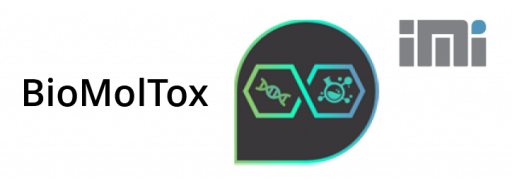Authors: Martin Češi, Andreja Jurič, Marko Obranović, Danijela Šeremet, Manuela Panić, Nevenka Kopjar, Maja Katalinić, Snježana Džijan, Antonio Zandona AbstractThe development of a new solvent useful in extractions of bioactive compounds from waste plant material presents a great challenge for researchers. Nowadays, deep eutectic solvents (DES) have become attractive since they can be formed by mixing different biologically non-harmful constituents. Although its components are considered safe, any newly formulated solvent must still undergo …
Continue reading New insights into fatty acid-based deep eutectic solvent as a carrier forcannabidiol: Cytotoxic and genotoxic effects in human astrocytoma cells
Category:Publications
The Ionizing Zwitterionic Oxime Antidote Attenuates Gliosis in Mice Exposed to Sarin
Authors: Nikolina Maček Hrvat, Borna Puljko, Rakesh K Sit, Katarina Ilić, Dora Kolić, Kristina Mlinac-Jerkovic, Svjetlana Kalanj-Bognar, Zoran Radić, Barry K Sharpless, Palmer Taylor, Zrinka Kovarik AbstractToxic organophosphates like the nerve agent sarin readily cross the blood-brain barrier (BBB) and inhibit acetylcholinesterase (AChE), a pivotal enzyme in regulating neurotransmission by hydrolysis of acetylcholine (ACh). Elevated levels …
Continue reading The Ionizing Zwitterionic Oxime Antidote Attenuates Gliosis in Mice Exposed to Sarin
Outlining the A-series of organophosphorus compounds: Cholinesterase inhibition, reactivation, cytotoxicity, and acute toxicity in mice
Authors: Zrinka Kovarik, Dora Kolić, Tena Čadež, Goran Šinko, Petra Tuksar, Tamara Zorbaz, Christophe Curty, Nikolina Maček Hrvat AbstractGiven the scarcity of experimental studies on A-series nerve agents (NAs), this paper provides ground-breaking insights and, for the first time, describes the inhibition and reactivation of human acetylcholinesterase (AChE) and butyrylcholinesterase (BChE) inhibited by these NAs using standard oximes. Furthermore, we present a detailed assessment of the toxicity profile of A-series NAs, …
Continue reading Outlining the A-series of organophosphorus compounds: Cholinesterase inhibition, reactivation, cytotoxicity, and acute toxicity in mice
Effects of N‐alkyl quaternary quinuclidines on oxidative stress biomarkers in SH-SY5Y cells
Authors: Antonio Zandona, Lucija Marcelić, Suzana Žunec, Josip Madunić, Maja Katalinić AbstractHaving a broad spectrum of biological and pharmacological activities, including anticholinergic, antihistaminic, antiparasitic, antioxidant, and antitumour, quinuclidine derivatives have piqued much interest in the field of drug discovery and biomedical research. This study investigates the oxidative stress effects of six N‐alkyl quaternary quinuclidine derivatives, namely three …
Continue reading Effects of N‐alkyl quaternary quinuclidines on oxidative stress biomarkers in SH-SY5Y cells
Simplified assessment of acetylcholinesterase inhibition by environmental organophosphorus pesticides
Authors: Ruihong Zhu, Yiyun Liu, Yongchao Ma, Tong Xu, Guanglei Yang, Antonio Zandona, Tena Čadež, Zrinka Kovarik, Heidi Qunhui Xie, Li Xu, Bin Zhao AbstractEnvironmental contaminants, such as pesticides, can inhibit the enzymatic activity of acetylcholinesterase (AChE), an enzyme necessary for neurotransmission. The inhibitory effects of structurally diverse pesticides on AChE may result from either reversible or covalent interactions. Therefore, assessing their potency typically requires different assay design to determine either dissociation constants or rate constants, respectively. …
Continue reading Simplified assessment of acetylcholinesterase inhibition by environmental organophosphorus pesticides
Photochemistry-driven design of small molecule cholinesterase ligands
Authors: Irena Škorić, Maja Sviben, Milena Mlakić, Tena Čadež, Nikolina Maček Hrvat, Zrinka Kovarik AbstractThe development of small-molecule ligands targeting cholinesterases remains a central focus in neuropharmacology, particularly for the treatment of neurodegenerative disorders and organophosphate poisoning. This review highlights the rational design, synthesis, and biological profiling of diverse classes of heterocyclic compounds – including oxazoles, …
Continue reading Photochemistry-driven design of small molecule cholinesterase ligands
Exposure of human neuroblastoma SH-SY5Y cells to amphetamine-type stimulants leads to oxidative-antioxidative imbalance associated with DNA damage and acetylcholine antagonism
Authors: Antonio Zandona, Andreja Jurič, Blanka Tariba Lovaković, Alica Pizent, Dubravka Rašić, Nevenka Kopjar, Maja Katalinić, Arnes Rešić, Irena Canjuga, Marijana Neuberg, Goran Kozina, Ana Lucić Vrdoljak, Irena Brčić Karačonji AbstractAmphetamine-type stimulants (ATSs) are widely abused substances that impair central and peripheral nervous system functions. The mechanisms of their toxicity on human neuronal cells have not …
Continue reading Exposure of human neuroblastoma SH-SY5Y cells to amphetamine-type stimulants leads to oxidative-antioxidative imbalance associated with DNA damage and acetylcholine antagonism
Cholinesterase activity modulators: Evaluation of dodecylaminoquinuclidines as inhibitors of human AChE and BChE
Authors: Ana-Marija Lulić, Lucija Marcelić, Alma Ramić, Andreja Radman Kastelic, Antonio Zandona, Nikola Maraković, Ines Primožič, Maja Katalinić AbstractIn this study, we investigated the inhibitory activity of novel dodecylaminoquinuclidines (QAs) on neurotransmitter-hydrolyzing enzymes, specifically acetylcholinesterase (AChE) and butyrylcholinesterase (BChE). Following our previous findings, we modified the structure of a lead compound to develop more potent modulators …
Continue reading Cholinesterase activity modulators: Evaluation of dodecylaminoquinuclidines as inhibitors of human AChE and BChE
Integrated Chemical and Biological Evaluation of Linden Honeydew Honey from Bosnia and Herzegovina: Composition and Cellular Effects
Authors: Ana Barbarić, Lara Saftić Martinović, Zvonimir Marijanović, Lea Juretić, Andreja Jurič, Danijela Petrović, Violeta Šoljić, Ivana Gobin AbstractHoneydew honey (HH) is a distinctive type of honey known for its dark colour, high mineral and polyphenol content, and pronounced biological activity. This study continues previous research on beech and chestnut honeydew honeys by presenting a comprehensive …
Continue reading Integrated Chemical and Biological Evaluation of Linden Honeydew Honey from Bosnia and Herzegovina: Composition and Cellular Effects
